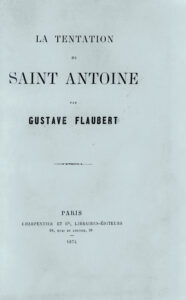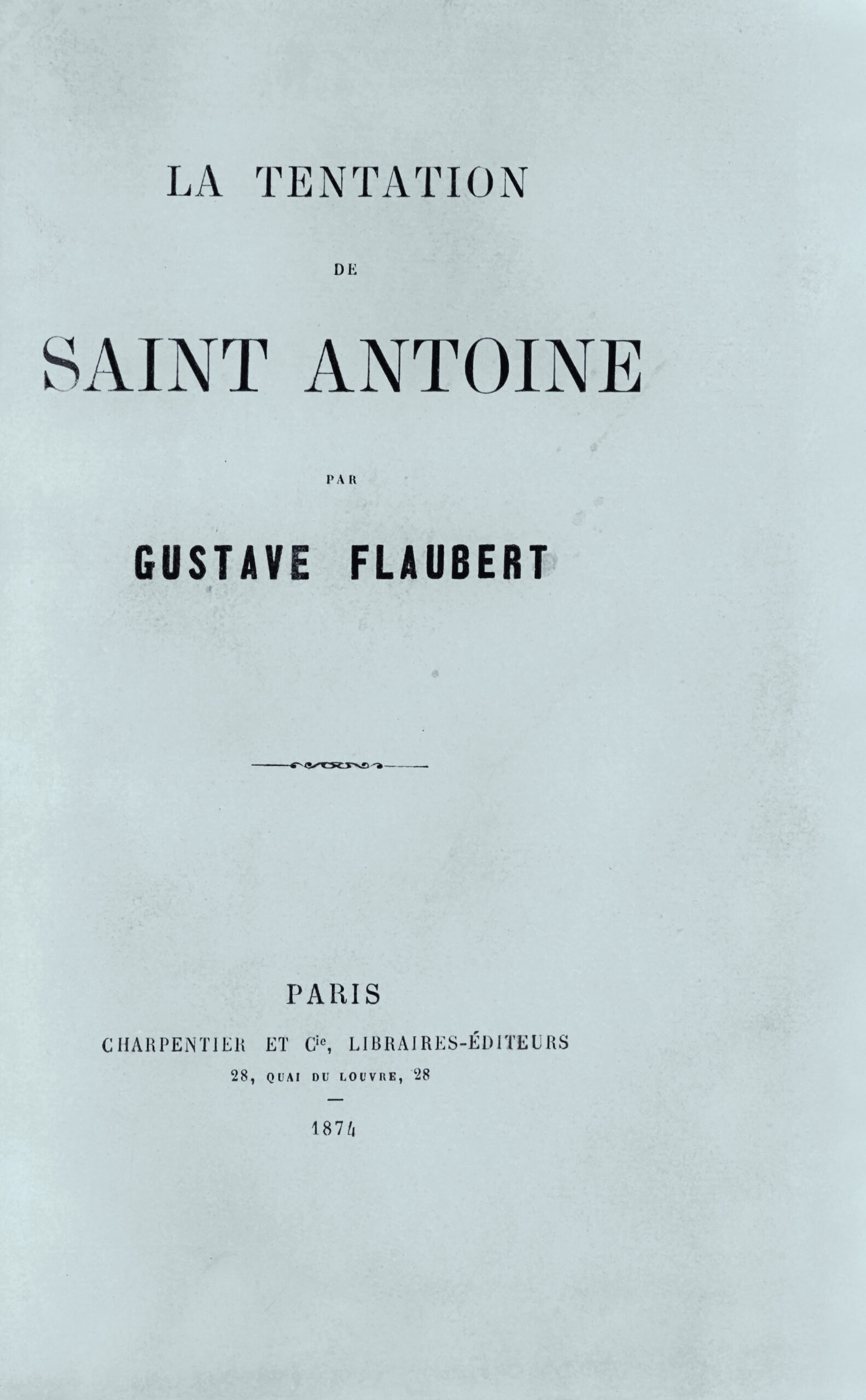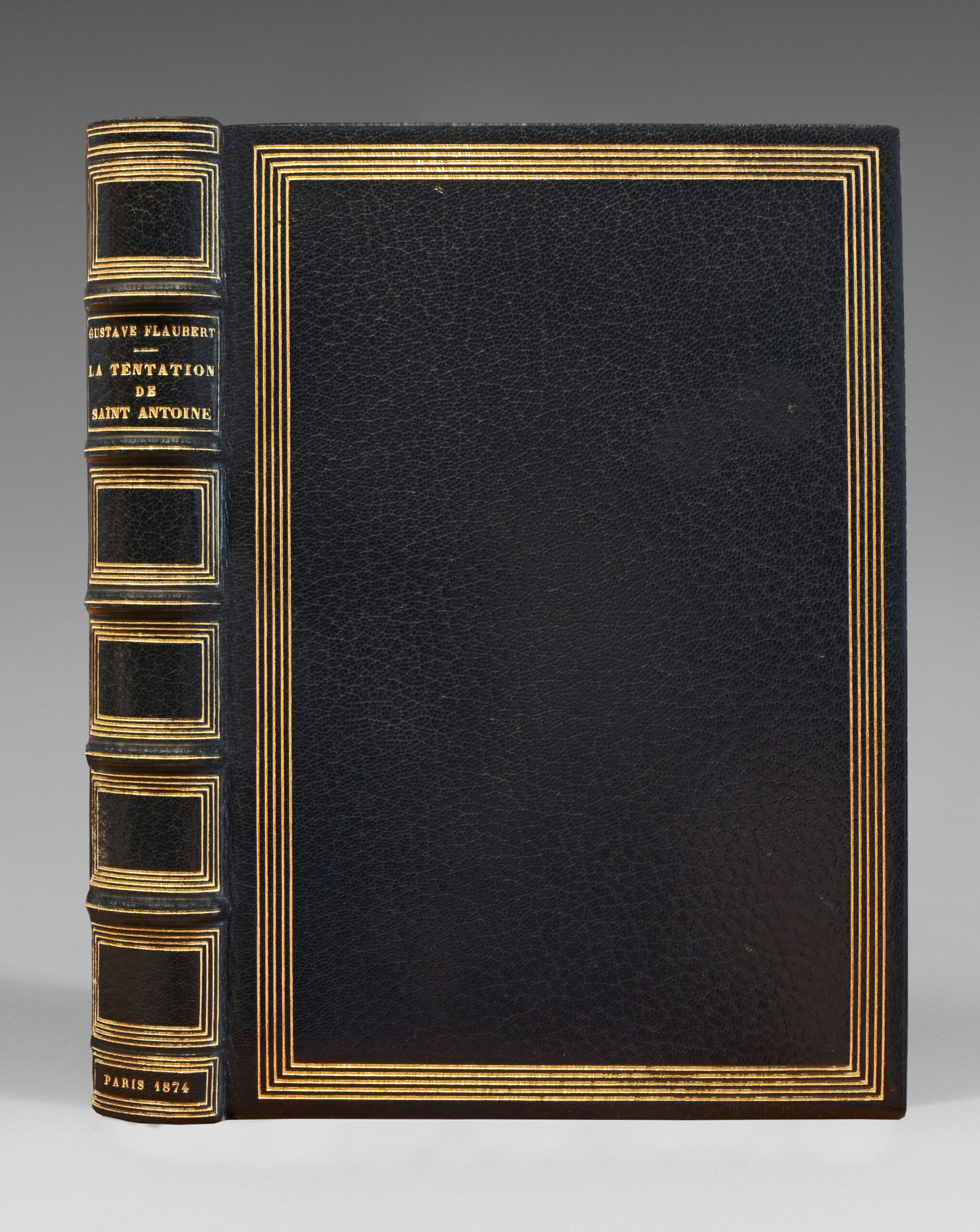Paris. Charpentier et Cie, 1874.
Large 8vo of (3) ll. and 296 pp. with 1 portrait of the author.
Bound in full midnight blue morocco, framed with five gilt fillets on the covers, ribbed spine, decorated garnet morocco doublures, blue moire endleaves, blue printed wrappers and spines bound in. Binding signed G. Mercier.
247 x 160 mm.
First edition.
One of 75 Holland paper, “highly sought after”, in blue glossy cover, numbered 9.
Carteret, I, 269; Clouzot. Guide du Bibliophile, 121; Vicaire, III, 728; Biblitohèque Rahir, 428.
The precise idea for the “Tentation” was given to Flaubert in 1845 by a painting by Breughel he saw in Genoa. He wrote it in 1848-1849, but decided not to publish it on the advice of Louis Bouilhet and Maxime du Camp (Correspondance).
He returned to the subject after publishing Madame Bovary in 1856, then completely rewrote his work from 1869 to 1872, after L’éducation sentimentale.
La Tentation de Saint Antoine, which Flaubert pondered for 30 years, is certainly his most significant work, and the one that best illustrates his conception of art.
This novel gave him the opportunity to indulge in “stylistic frenzies” and “lyrical gueulades“, which he saw as the surest way to give himself the spiritual voluptuousness he craved.
Written between 1849 and 1874, it allows us to follow the progress of Flaubert’s method and the consolidation of his style.
This work, Flaubert’s most cherished, was above all a means for him to gather together his dreams of the Old East and the voyage that marked his life.
“Review of all the ancient religious forms, procession of all the heresiarchs, parade of the strangest idols, appearance of Helen and the Queen of Sheba, swarming of fantastic animals, vision of frenzied lust, incarnation of Satan: it’s a perpetual evocation of the past as could be recreated by an exalted imagination excited in its exaltation and gifted with a marvellous power to translate itself visibly.”
A superb, very pure copy, one of 75 on Holland paper, untrimmed, with blue wrapper, in an elegant lined binding signed by G. Mercier.
Provenance: from the library of the Marquis Du Bourg de Bozas, with ex-libris.



